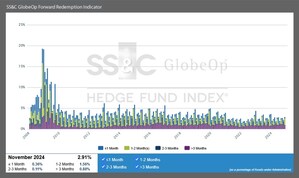WINDSOR, Conn., Oct. 6, 2016 /PRNewswire/ -- SS&C Technologies Holdings, Inc. (Nasdaq: SSNC), a global provider of financial services software and software-enabled services, today released a study that reveals a disconnect among the banking sector's readiness for Current Expected Credit Loss (CECL). According to the survey, 85 percent of respondents, which included accounting professionals within financial institutions, expressed being confident or somewhat confident in the ability of their existing reserving process to address the CECL transition. However, 47 percent of respondents cited managing a massive amount of data as their top concern. The survey also found that for many respondents, the current reserving process is still comprised of inefficient spreadsheets and manual processes. When preparing for CECL, financial institutions can take advantage of the benefits of an integrated technology platform - automated processes and integrated reporting and analytics. The research was conducted by Primatics Financial, an SS&C company, at the 2016 AICPA National Conference in Washington, D.C. Sept. 21 – 22.
The Path of Most Resistance
Under the new accounting standard, financial institutions will be required to consider reasonable and supportable forecasts into a forward-looking credit loss estimate, rather than relying on past events and current conditions. The survey found that 83 percent of bankers believe CECL will have a substantial impact on policies, procedures and technology, or could even be the biggest change to bank accounting ever.
The current reserving process for many banks is cumbersome and outdated. Banks are often unaware of the benefits technology can provide in facilitating the current process as well as the transition to CECL. For example, nearly half (47 percent) of respondents ranked managing an overwhelming amount of data as their biggest obstacle. However, only 16 percent plan to upgrade their technology to help with the heavy lifting and just 12 percent have existing end-to-end technology solutions in place.
"While much has been written to help banks understand CECL from a policy perspective, little attention has been paid to help institutions prepare for the operational impacts of CECL adoption. This study sheds light on some of the gaps," said John Lankenau, Senior Vice President of Product and Operations, SS&C Primatics. "The changing landscape gives banks a chance to get it right from the start. Best practices leveraging technology-enabled automation, and integrated risk and finance results can help banking professionals get the job done efficiently, while delivering cost savings over the long term."
Thirty-nine percent of respondents listed spreadsheets as the top tool for current US GAAP reserving processes. Unfortunately, maintaining controls over spreadsheets and manual processes can be an onerous challenge. An automated solution can easily perform calculations leveraging large datasets while generating robust reporting and analytics. Loss forecast models can be integrated into the platform to create an end-to-end forward-looking reserving solution.
The Road to Compliance
The effective date for transition to CECL is 2020 for SEC-registrants and 2021 for others. Because CECL will entail cross-functional changes to the end-to-end reserving process for financial assets measured at amortized cost, it is not too early to get started on a transition plan. In fact, 45 percent of banks polled have already begun preparing for CECL implementation and another quarter of respondents plan to begin before the end of this year.
The burden of the transition will fall on current teams. Half of banks will train existing staff, who will be responsible for transition to CECL as well as the regular accounting close cycle. While another 23 percent also plan to work with existing staff, they will establish a dedicated CECL transition team that operates separately from the accounting close team.
Responding to Questions from Stakeholders
Becoming compliant is the first hurdle. Banks will also need to present and explain a potentially volatile estimate to stakeholders each reporting period. Answering questions from auditors, regulators and investors was the second topmost concern for survey respondents (27 percent). Banks will be required to document their estimation method and discuss changes in the factors influencing the CECL estimate – the right technology can ease this burden.
Methodology
The survey was conducted at the 2016 AICPA National Conference on Banks & Savings Institutions in Greater Washington, D.C. on Sept. 21-22. Results are based on a seven multiple-choice question poll of 102 CPAs, controllers, treasurers and accounting professionals within banking institutions of total assets ranging from less than $3 billion to greater than $250 billion. Full survey results can be found here.
About SS&C Technologies
SS&C is a global provider of investment and financial software-enabled services and software for the global financial services industry. Founded in 1986, SS&C is headquartered in Windsor, Connecticut and has offices around the world. Some 10,000 financial services organizations, from the world's largest institutions to local firms, manage and account for their investments using SS&C's products and services.
Additional information about SS&C (Nasdaq: SSNC) is available at www.ssctech.com. Follow SS&C on Twitter, Linkedin and Facebook. The SS&C Technologies logo is available at www.globenewswire.com/newsroom/prs/?pkgid=8587
Logo - http://photos.prnewswire.com/prnh/20150410/197838LOGO
SOURCE SS&C
Related Links
WANT YOUR COMPANY'S NEWS FEATURED ON PRNEWSWIRE.COM?
Newsrooms &
Influencers
Digital Media
Outlets
Journalists
Opted In





Share this article